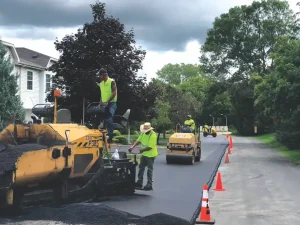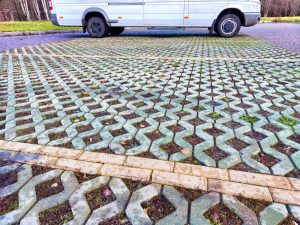For a moment, imagine your office complex as a safe harbor situated amidst a black sea of asphalt and concrete reefs – the only direct passage to the port in the storm that your company provides.
When calm, that sea can be an enchanting and captivating vista, but unmaintained, its surface can become choppy and tumultuous, causing unwary travelers to lament, “Here, there be potholes.”
As a commercial property manager, making a dynamite first impression with guests, tenants, and clientele should be at the top of your to-do list, superseded only by making sure that their time spent with you is hazard free.
Given the multitude of things that can go south in a commercial property setting – from fire hazards to flooding and beyond – it is sometimes all too easy to overlook the potential dangers that may lurk right below our feet. Pavement safety, however, is tantamount to managing a tight ship, as the myriad injuries that can stem from unfortunate – and highly preventable – slips and falls, can yield colossal liability issues.
Some of the most common causes of pavement and sidewalk-related injuries include:
- Cracks. Cracks in asphalt can be caused by drastic changes in temperature or the weather; the natural shifting of the earth; inferior materials; or simply normal wear and tear. There are various classifications of pavement cracks, and many can lead to pedestrian mishaps.
- Uneven pavement. Who among us hasn’t clumsily stumbled over a raised portion of sidewalk (and then hastily looked around to see if anyone noticed)? There are a number of factors that can contribute to uneven concrete pavement, but the most common include the natural shifting of materials, elemental changes, and upheaval caused by tree roots. Removal and replacement of faulty partitions is often the best course of action to ensure pavement safety.
- Potholes. An all-too common hazard for motorists, potholes are formed when water seeps into pavement and expands and contracts due to freeze-thaw cycles. The process weakens the supporting soil until the top layer of pavement is pushed beyond the breaking point by ensuing traffic loads. Left untreated, they can grow to several feet in length.
- Debris. Often, pavement safety has nothing to do with structural anomalies, and everything to do with keeping sidewalks and pathways clear of potentially dangerous obstacles such as tipped trash receptacles, fallen tree limbs, and downed signage. Residual oil slicks left from vehicles in your parking lot and other slippery spills should be treated promptly.
- Ice and snow accumulation. When dreaded nor’easters transform the Mid-Atlantic into an arctic wasteland, a property owner’s primary objective becomes opening for business on time, while keeping parking lots and walkways clear of snow and ice for employees and clients.
As a property owner, it is your responsibility to ensure safe passage for pedestrians accessing your parking lot, curbs, and sidewalks. Luckily, achieving optimal pavement safety can be as easy as making a phone call to enlist the service of professionals, such as the team at Pro-Pave, Inc.
Pro-Pave offers complete asphalt construction and complete concrete pouring services, as well as scheduled maintenance, restoration, and emergency repairs. Call us today at (703) 433-9500.





